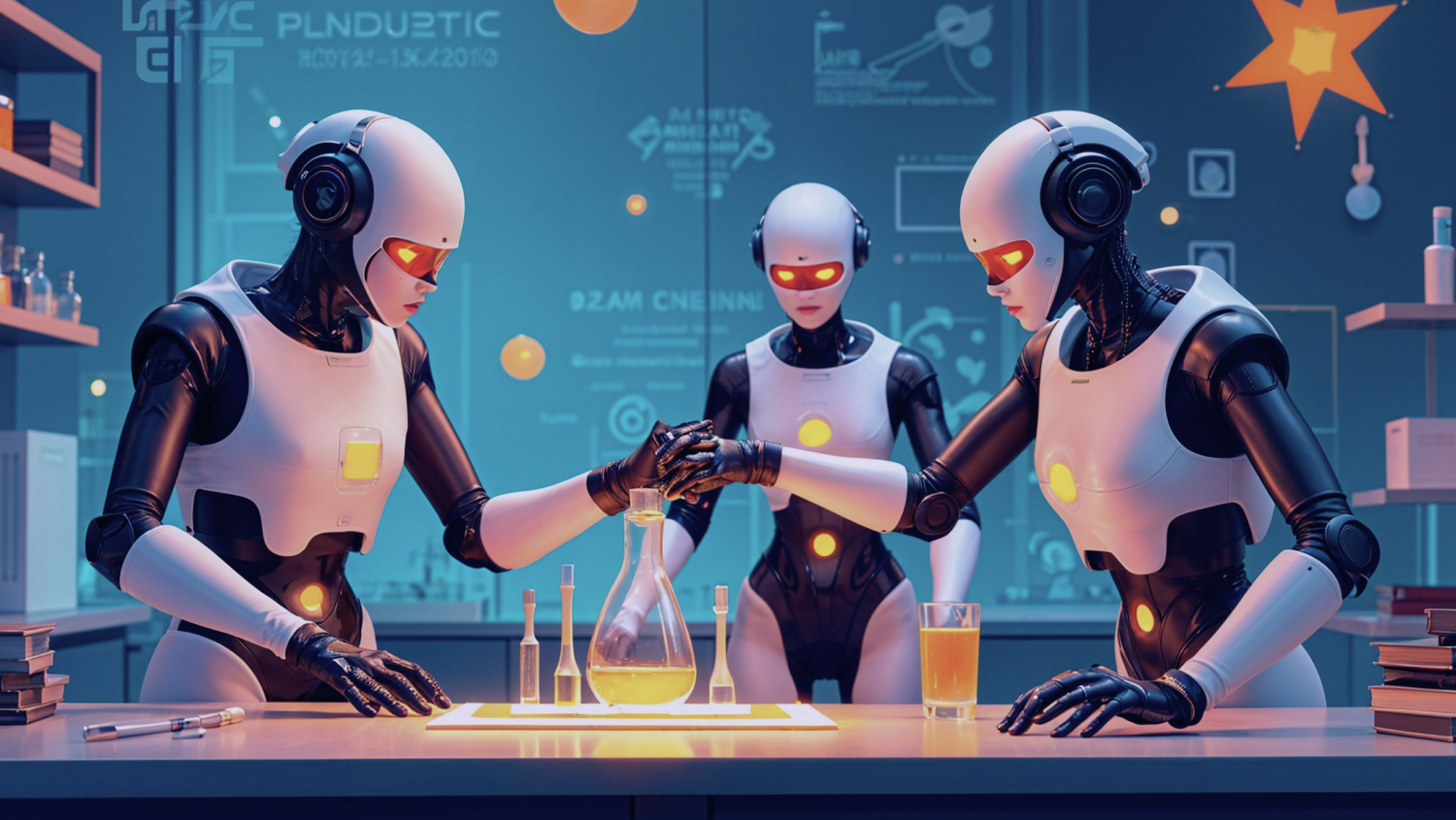A researcher at a top university is buried under a mountain of academic papers, struggling to keep up with the latest breakthroughs across multiple disciplines. They’re spending hours manually sorting datasets, cross-referencing studies, and trying to identify patterns that could lead to their next big discovery.
Despite their expertise, the pace of innovation is slowed—not by lack of ideas, but by the overwhelming volume of information.
Now, imagine that same researcher working alongside an AI agent that has already read millions of publications, synthesized findings across domains, and can propose novel, evidence-backed hypotheses within minutes. This isn’t a futuristic fantasy—it’s already happening.
With 51% of enterprises already using AI agents in production and 78% planning to adopt them, it’s clear that AI is becoming an indispensable tool—not just in business, but in academia and research as well.
AI agents have been shown to reduce time spent on manual data tasks by up to 80%, making research more scalable, and impactful.
In this blog, we explore how AI agents in scientific research work, from literature reviews and hypothesis generation to experiment design and real-world validation.
You’ll discover how researchers can start adopting AI in their workflows, see real-world examples in action, and learn about pioneering systems like the AI co-scientist that are setting a new standard for collaboration between humans and machines.
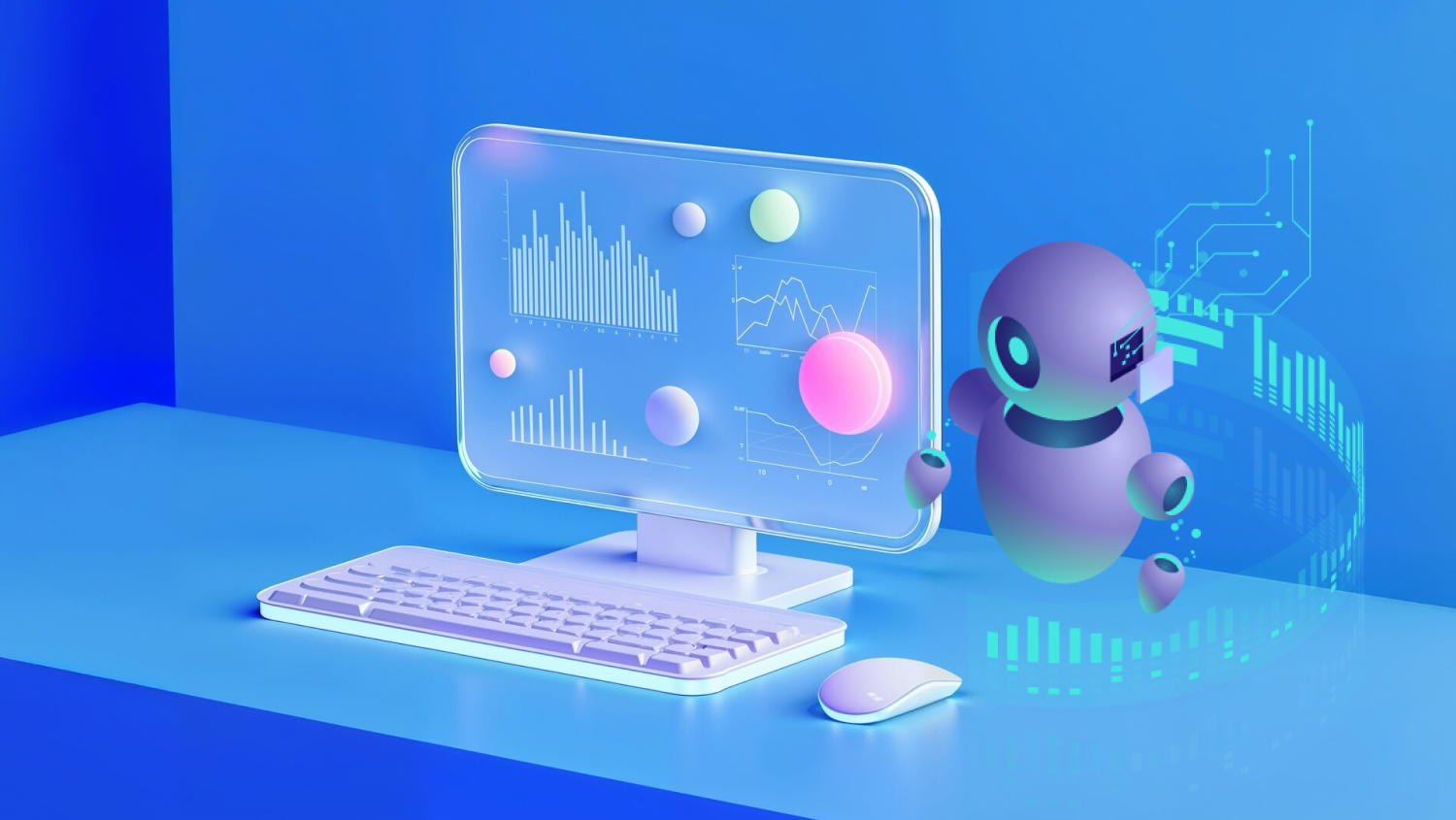
The Role of AI Agents in Modern Scientific Research
AI agents in scientific research are changing how discoveries happen. These are not just regular software tools. They are intelligent systems that can understand data, generate new ideas, and even help design experiments—all on their own.
At the core of these agents are powerful AI technologies:
- Machine learning – allows systems to learn from patterns in data
- Deep learning – enables understanding of complex structures and relationships
- Natural Language Processing (NLP) – helps AI interpret and generate human language
- Generative AI – creates new content, hypotheses, or designs based on learned data
What sets AI agents apart from traditional research tools?
- They don’t just automate tasks—they adapt and make decisions
- They improve over time as they process more information
- They actively support scientists in designing experiments and generating hypotheses
A well-known example is AlphaFold by DeepMind, which solved the decades-old challenge of predicting protein structures—something that had puzzled researchers for years.
The impact of these systems is already measurable:
- A 2024 MIT study showed that AI agents reduced hypothesis testing time by 40% in biological materials research
- This means faster research cycles and deeper insights, made possible through intelligent automation
One major breakthrough is SciAgents, developed by MIT. In this framework:
- Multiple AI agents—built on models like OpenAI’s ChatGPT-4—work together like a team of human scientists
- They organize scientific knowledge into graphs, linking ideas and evidence to generate new hypotheses
- In one example, SciAgents analyzed 1,000 studies on biological materials and proposed new directions for research that hadn’t been considered before
Another major advancement is the Virtual Lab, a digital environment powered by GPT-4o. It includes AI agents with specialized roles, such as:
- Principal Investigator
- Computational Biologist
- Scientific Critic
These agents collaborate to tackle complex scientific problems. For instance:
- They helped design nanobodies for SARS-CoV-2 variants like JN.1 and KP.3
- Tools used include ESM, AlphaFold-Multimer, and Rosetta, enabling rapid molecular design and evaluation
Key Applications of AI Agents in Scientific Research
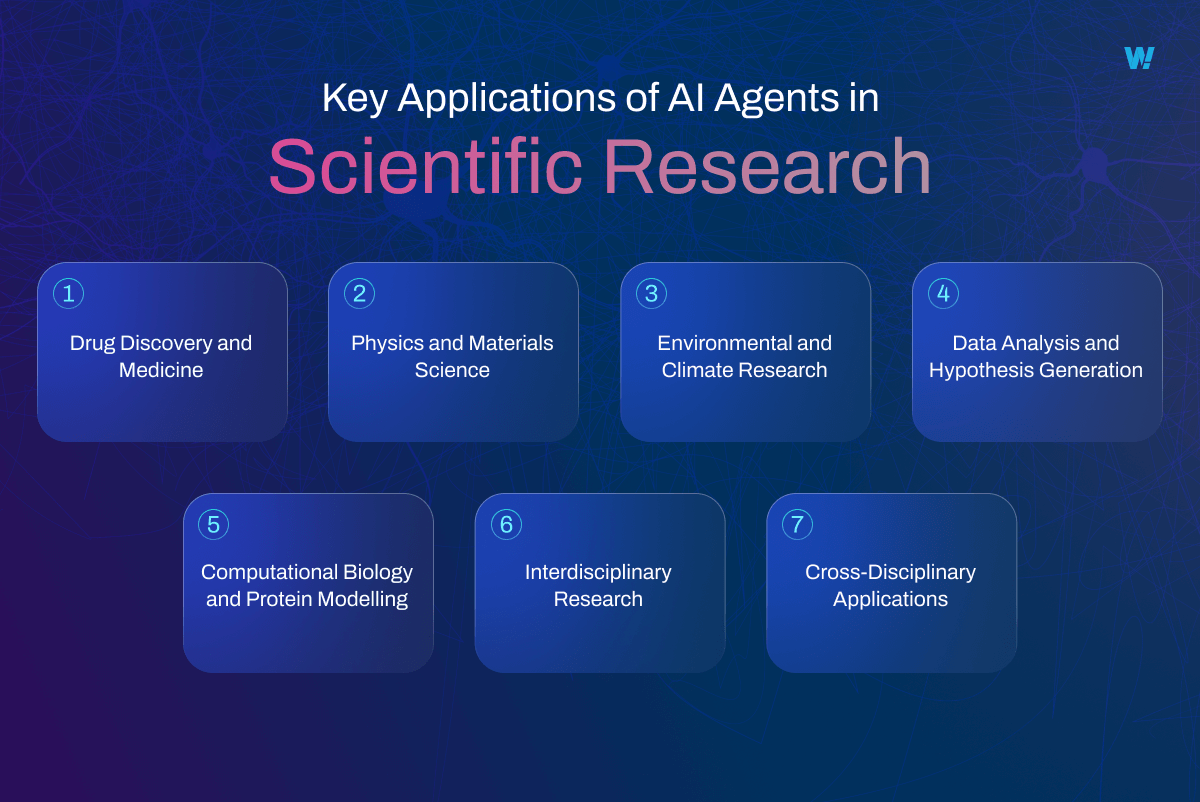
AI in Drug Discovery and Medicine
Drug discovery has always been a long, expensive, and uncertain process. AI agents are changing that.
These agents can rapidly analyze enormous datasets of molecular structures, biological responses, and clinical trial results to identify drug candidates. Unlike traditional methods that rely on years of manual experimentation, AI can simulate how thousands of compounds might interact with a disease target in just days.
One standout example is Exscientia, a company using AI to design new drug molecules. Their AI systems are not only selecting potential compounds but also optimizing them for effectiveness and safety before they ever reach a lab.
In recent trials, AI-driven drug development has shown impressive results:
- Reduced drug discovery timelines by up to 30%
- Cut costs by around 25% compared to conventional processes
During the COVID-19 pandemic, AI agents were used to predict protein interactions, helping scientists quickly identify vaccine targets and therapeutic antibodies. The speed and precision offered by AI made a real difference during a global health crisis.
AI in Physics and Materials Science
Physics and materials science often involve exploring unknown territory, where trial and error can be both slow and expensive. AI agents are proving to be powerful allies in this space.
They are capable of simulating quantum systems and predicting how new materials will behave under various conditions. This helps scientists avoid costly lab experiments by narrowing down the most promising materials to test.
At MIT, researchers used AI agents to design quantum materials with properties suitable for next-generation computing and energy storage. These systems are trained to understand how atoms interact and how new compounds might perform.
A powerful example is the use of SciAgents, which analyzed datasets to discover novel metal alloys. These materials exhibited unique strength and flexibility properties that traditional simulations might have missed. By identifying these promising materials early, AI helped cut down experimental costs and time significantly.
AI in Environmental and Climate Research
Understanding climate change means making sense of vast, complex, and constantly changing environmental data. AI agents excel in precisely this kind of task.
These agents are being used to:
- Model long-term climate patterns
- Predict extreme weather events
- Optimize renewable energy systems like wind and solar power
Unlike traditional models, AI systems can ingest real-time satellite data, weather reports, and historical climate records all at once. They learn from this combined data to generate more accurate forecasts and simulations.
One recent breakthrough saw AI agents predicting climate change impacts with 20% more accuracy than earlier models. This allows policymakers and researchers to better prepare for floods, droughts, and shifting weather systems—before they happen.
In sustainability research, AI is also being applied to design more efficient energy storage systems, track carbon emissions, and even manage agriculture in changing climates.
AI in Data Analysis and Hypothesis Generation
Modern science produces more data than any human team can analyze alone. That’s where AI agents come in.
These agents are trained to scan, clean, and interpret massive datasets across disciplines—whether it’s genomic sequencing, particle physics, or astronomical imaging.
One of the most exciting uses is in hypothesis generation. Instead of waiting for human scientists to connect the dots, AI agents like SciAgents analyze thousands of research papers, detect hidden relationships, and propose novel research questions.
For example:
- CERN uses AI to analyze data from the Large Hadron Collider, one of the most complex physics experiments in history. The AI helps filter meaningful events from billions of collisions, accelerating discoveries in particle physics.
- SciAgents reviewed 1,000 studies on biological materials, identifying patterns and gaps that human researchers hadn’t noticed. These insights were then used to propose new experimental directions.
This kind of insight-driven automation is making science faster, deeper, and more precise.
AI in Computational Biology and Protein Modeling
AI has made a particularly profound impact in biology, especially in understanding how proteins fold, interact, and function—essential information for medicine and biotechnology.
The Virtual Lab, a collaborative system powered by AI agents, is one example of this in action. It uses tools like AlphaFold-Multimer and Rosetta to model protein structures with extreme accuracy.
In a recent case:
- Virtual Lab agents collaborated to design nanobodies for newer SARS-CoV-2 variants such as JN.1 and KP.3
- These designs were optimized using AI models to ensure stability, binding efficiency, and safety—before being physically tested
Where traditional methods might take years, AI-enabled workflows complete the same tasks in weeks. This not only speeds up biomedical innovation but also makes drug design more accessible and scalable.
AI in Interdisciplinary Research
The most complex scientific challenges—like fighting pandemics or reversing climate change—can’t be solved by one discipline alone. That’s why interdisciplinary collaboration is essential. AI agents are now simulating these collaborative teams.
In the Virtual Lab, AI agents take on specific scientific roles, such as:
- Immunologist
- Computational Biologist
- Molecular Chemist
- Machine Learning Expert
These agents bring different perspectives to the same problem, much like a real-world team of scientists would. They share findings, critique each other’s ideas, and even revise experimental designs based on collective reasoning.
This allows researchers to test multiple theories in parallel and generate more robust solutions.
Cross-Disciplinary Applications
AI agents are versatile by design. Their ability to work across domains is opening new possibilities in:
- Rare disease therapies, where personalized medicine requires both biology and data science
- Sustainable materials, combining environmental goals with materials engineering
- Climate modeling, blending environmental science with statistical and AI-based prediction models
For example, the Virtual Lab architecture is modular. That means the same system that helps design COVID-19 vaccines can also be adapted to model new battery materials or simulate the behavior of greenhouse gases.
By blending expertise from across scientific fields, AI agents are not just assisting researchers—they are expanding the boundaries of what’s possible.
Benefits of AI Agents in Scientific Research
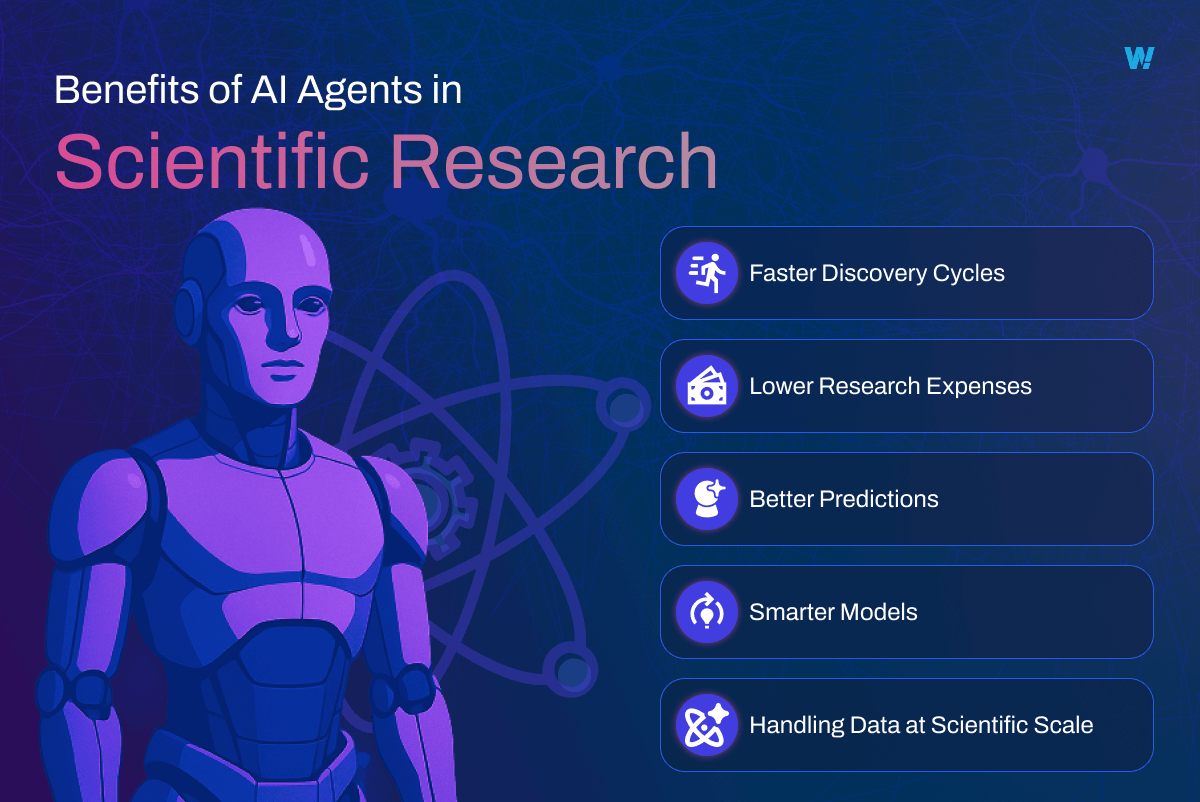
AI agents are transforming the way science is done. From accelerating discovery to improving accuracy, their benefits are being felt across disciplines—from biology and materials science to climate research. Here’s how AI agents are changing the research game:
1. Speed: Faster Discovery Cycles
AI agents dramatically reduce the time it takes to generate and test scientific hypotheses.
- Example: In recent biology experiments, SciAgents reduced hypothesis testing time by 40%.
- AlphaFold, developed by DeepMind, solved protein structures in months instead of years, helping researchers skip time-consuming lab work.
- AI automates complex tasks like literature review, data cleaning, and simulation setup, speeding up every stage of the research process.
2. Cost Efficiency: Lower Research Expenses
By reducing manual effort and minimizing trial-and-error, AI helps cut costs significantly.
- Repetitive and computational tasks—such as scanning databases or running simulations—are handled by AI with minimal resource input.
- SciAgents help streamline the research pipeline, enabling labs to test more ideas with fewer experiments.
- AI eliminates many false leads early, saving both time and money in the long run.
3. Accuracy: Better Predictions, Smarter Models
AI agents bring unprecedented precision to data analysis and model-building.
- Graph-based reasoning models, like those used by SciAgents, improve the quality of predictions by understanding relationships in data more deeply.
- In fields like genomics and climate modeling, AI has outperformed traditional statistical methods, leading to more accurate insights.
- AI continually learns and adapts, refining its predictions with every iteration.
4. Scalability: Handling Data at Scientific Scale
Modern research generates massive datasets that are beyond human processing. AI agents are built for this scale.
- SciAgents have coordinated in groups of 1,000+ agents, collaborating to explore complex scientific problems in parallel.
- Whether it’s analyzing terabytes of climate data or thousands of biomedical studies, AI can process, summarize, and reason at a level humans can’t match.
- This scalability opens doors to multi-agent collaboration, where each AI specializes in a different domain.
How Researchers Can Adopt AI Agents
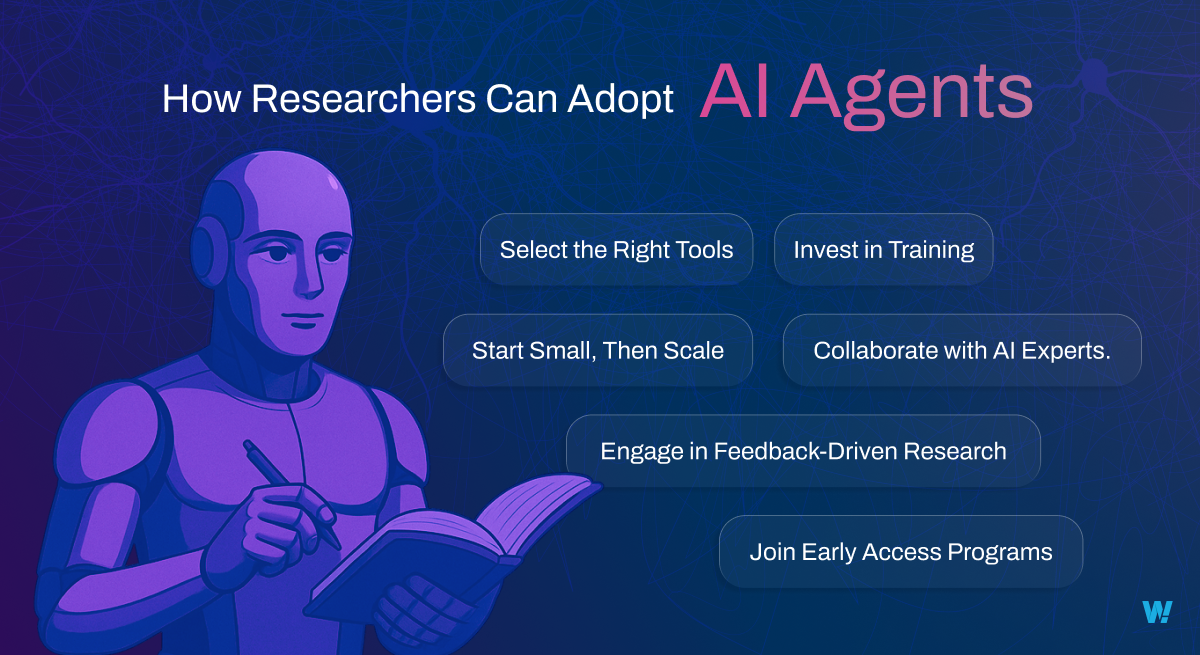
Researchers can begin adopting AI agents into their workflow by following these actionable steps:
- Select the Right Tools: Start with proven platforms like TensorFlow or PyTorch. For specialized needs, explore purpose-built systems like DeepMind’s AlphaFold or Google DeepMind’s AI co-scientist, powered by Gemini 2.0.
- Invest in Training: Equip researchers with foundational AI literacy and data science skills. Institutions like Stanford are embedding AI courses into graduate programs and research labs.
- Collaborate with AI Experts: Partner with AI labs or industry leaders to co-develop research models. SciAgents, for example, emerged from such academic–industry partnerships.
- Start Small, Then Scale: Use AI for initial tasks such as literature review, data cleaning, or hypothesis generation before expanding into experimental design and validation.
- Engage in Feedback-Driven Research: AI systems like AI co-scientist thrive on natural language input and iterative human feedback—ensuring that scientists remain central in the research loop.
- Join Early Access Programs: Researchers and institutions can apply for initiatives like the Trusted Tester Program to pilot tools like the AI co-scientist in real-world research settings.
Example:
At MIT, Professor Markus Buehler emphasizes how AI tools simulate creative scientific discovery. His work with SciAgents and Virtual Lab frameworks shows how multi-agent systems can mirror human reasoning, propose novel hypotheses, and even design experiments with real-world impact. Similarly, the AI co-scientist platform has generated testable hypotheses for challenges like antimicrobial resistance and liver fibrosis—some already validated in labs.
Final Thoughts
Scientific discovery has always thrived at the intersection of curiosity, collaboration, and computation. Today, with the rise of AI agents that can simulate reasoning, generate hypotheses, and even propose entire research agendas, we are entering a new era—one where machines are not just tools, but thinking partners.
This shift holds immense promise, particularly in an age of information overload and increasingly complex research questions.
Ready to bring AI agents into your lab?
At Agentic AI Labz by Wow Labz, we help research institutions and scientific teams integrate multi-agent AI systems tailored for discovery, experimentation, and innovation. Whether you’re exploring AI for literature synthesis, hypothesis generation, or experiment planning, our team can guide you through adopting and customizing the right AI workflows for your domain.
Partner with us to Accelerate your research. Expand your impact. Let AI amplify your scientific imagination.
